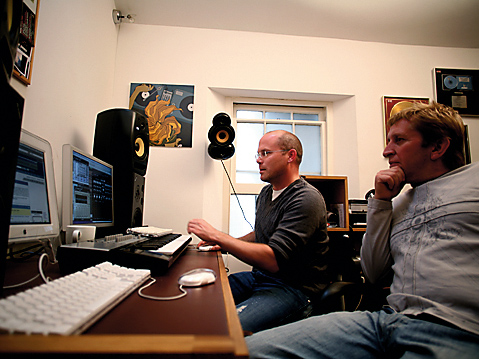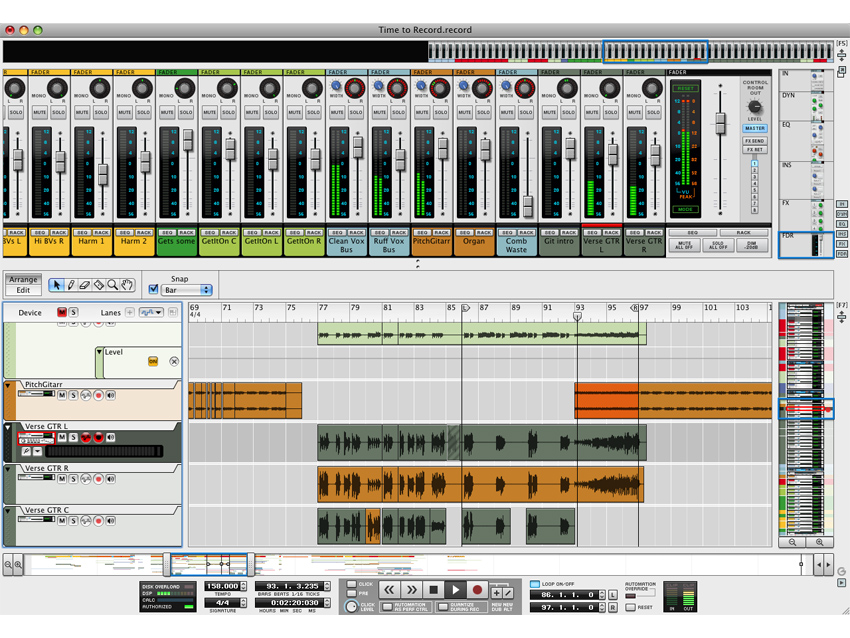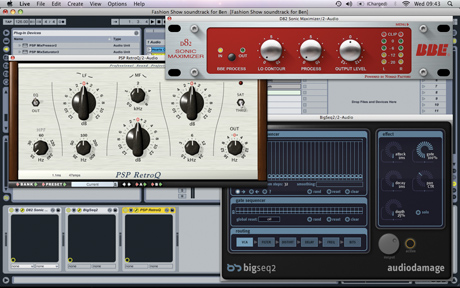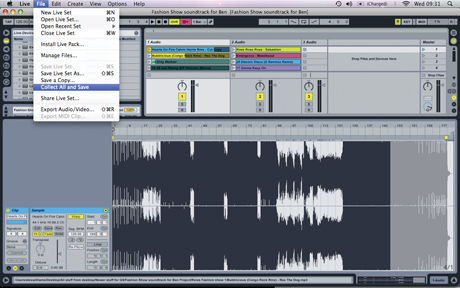16 ways to make your music collaborations work

In theory, working with another person on a track (or, indeed, other persons) should ensure that you get better, faster results than when you're working on your own, but it doesn't always seem to work out that way.
Frequently, collaborations can turn into aimless, non-productive affairs, or even end up with one or more people downing tools and storming out of the studio. This, we think you'll agree, is something that's best avoided.
We've put together a list of 16 tips that will help ease the process of collaboration and make your creative partnerships all the more enjoyable.
1. Get fast uploads
If you're collaborating online, you're going to be bouncing a vast amount of data back and forth on the internet, and some programs, like Propellerhead's forthcoming Record, create very large files indeed. Make sure you get an internet connection with high upload speeds, as well as download.

2. Naming conventions
When sending and receiving files, it can be difficult to keep track of the latest version. A useful trick is to keep the version number of the project and your initials in the file name, so that you can always tell who last edited it and also be sure that it's the latest version.
3. Share the load
It's very easy to get caught up in the details and forget that there's somebody else working on the project, even when you're sitting next to each other, so set a time limit for each addition, almost like a game of chess. Each person gets to do whatever they like for as long as they're in the driving set - saving it as a new version each time the swap is made.
4. Import issues
Learn how to import parts into projects in your particular DAW (for example, Live enables you to drag complete projects or individual tracks/patches in from the browser). Sometimes it might involve saving channel strips and importing a corresponding MIDI file; other projects might require swapping processed audio stems. Talk it over and find best way for you and your platform(s).
Get the MusicRadar Newsletter
Want all the hottest music and gear news, reviews, deals, features and more, direct to your inbox? Sign up here.
5. Sensible swapping
Rather than sending the complete file every time you share a new version of a project over the net, find a simpler alternative. If you're only changing small parts, consider sending a channel strip and MIDI or audio file, rather than the whole project. And if no new files have been added, send the project file.
"It's very easy to get caught up in the details and forget that there's somebody else working on the project, even when you're sitting next to each other."
6. Get your files in order
Keep track of any new files you are adding to a project compared to the list you started with, that way you need only send the additions and the project file to your online collaborator. A good way to do that is to do a screengrab of your resources folder as soon as you receive the file from the other person. And also make sure you delete any unused files.
7. Match your setups
Collaboration is always easier when you both have the same plug-ins, so if you are planning to make a it a long term commitment, consider homogenising your setups, as this will save a lot of part bouncing. Alternatively, many sequencers let you freeze parts so that the project plays back properly without all the plug-ins on frozen channels.

8. Find some direction
Sit down with your collaborator and go through each other's top ten tracks before starting any new project together. Discuss what you want, and highlight the elements you would like in your own track.
9. Learn from each other
In a great number of production partnerships, one person is the more technical of the two, and that can work very well indeed. However the best way to improve your productions is to work with somebody at least as technically adept as you. They're bound to have some techniques you haven't thought of, even if you're at a similar level.
10. Speak your mind
When you're working together, there's usually a time to compromise. But if you really don't like a part then speak up and make sure you both have the power of veto. Just try not to use it too much, and if you find it constantly causing problems, then you probably aren't meant to be working together.
"If you really don't like a part then speak up and make sure you both have the power of veto."
11. Cable collection
If you regularly work with different people, make sure you have at least one type of every common cable, even if you'll never need it yourself (iPod, FireWire 800, etc). You never know when somebody will rock up with a specific playback or storage device and assume that you have the cable for it - and it'll probably be the one who lives furthest away and has all of their material on the device in question.
12. Keep everything together
Some applications, such as the forthcoming Record from Propellerhead, conglomerate all of the files in a project into one master file, but most DAWs let you reference files all over your hard disk, making it very easy to miss some when you're saving and swapping. The easiest way to avoid this is to make sure you keep a master folder containing every active component file. Most programs have a variation on Save As Complete or Collect and Save.

13. Bring something to the table
One thing guaranteed to put a damper on a studio session and make it very one-sided is you showing up without any material, be that complete tracks for a template or just a few inspirational sounds. To keep things moving, have an idea of the kind of track you want to make, and bring along any samples you might need, as well as a good selection of tracks in that style. If you're a DJ, all of your current DJing tracks would make a good start.
14. Same hymn sheet
This will sound like an obvious one, but make sure you have common musical ground with your collaborators and, even more importantly, shared musical goals. For example, there's no point going in with somebody who doesn't like electro if that's what you're after.
15. Monitor matters
If you're regularly recording, consider getting a headphone amp so that more than one person can monitor as the recording is made. Otherwise, the person without cans will only be able to hear what's being recorded, not the backing track, meaning they can't make any suggestions until they hear the recording back.
16. Take a break
If you're both working on a long session, sometimes it can be good to go for a walk or take a shop break while the other person is working on the track. It gives them a chance to try stuff without worrying about impressing you, enabling them to work more naturally, and it also means you can come back and be far more objective, having had an ear-break and not having heard any new parts evolve.
Liked this? Then try:
8 free ways to make music online
17 collaborations weirder than Jay-Z/Coldplay
Sign up for our free weekly newsletter
The free MusicRadar newsletter serves up the week's biggest artist and product news stories alongside exclusive tuition and gear reviews. Sign up here!
Follow MusicRadar on Twitter
Get instant updates and bonus content plus chat with the team. Start here!
Computer Music magazine is the world’s best selling publication dedicated solely to making great music with your Mac or PC computer. Each issue it brings its lucky readers the best in cutting-edge tutorials, need-to-know, expert software reviews and even all the tools you actually need to make great music today, courtesy of our legendary CM Plugin Suite.
"If I wasn't recording albums every month, multiple albums, and I wasn't playing on everyone's songs, I wouldn't need any of this”: Travis Barker reveals his production tricks and gear in a new studio tour
“My management and agent have always tried to cover my back on the road”: Neil Young just axed premium gig tickets following advice from The Cure’s Robert Smith










